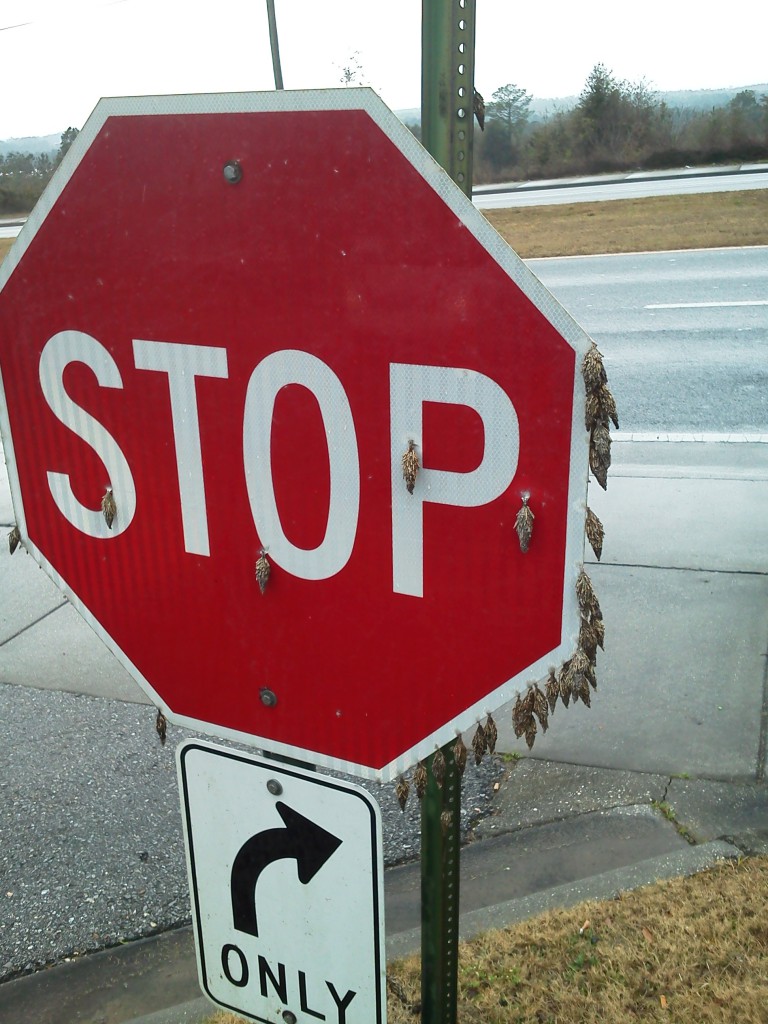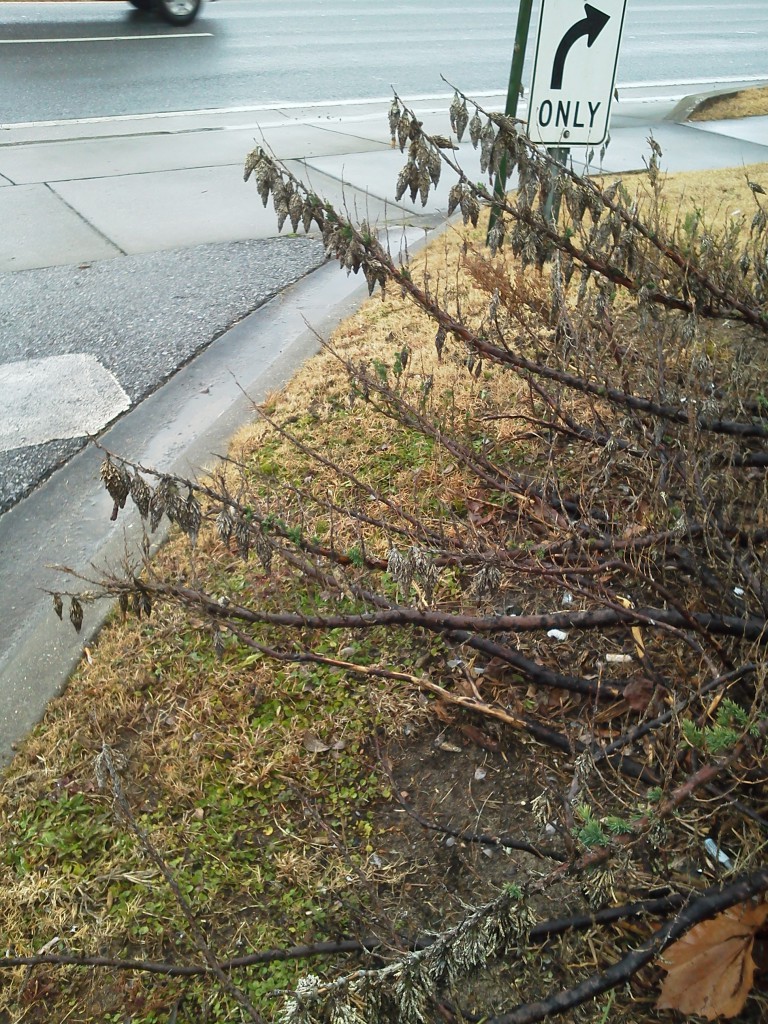Northwest Florida is the most southern range of the common bagworm, Thyridoptgeryx ephemeraeformis, but the majority of the plants they feed on can be found here. Common host trees include Red Cedar, Live Oak, Maple, Elm and Pine. Other susceptible shrubs include Indian Hawthorn, Juniper, Arborvitae, Ligustrum and Viburnum.
Bagworms overwinter as a clutch of 500-1000 eggs wrapped in the leaves of the infested plant. In late spring the larvae hatch as tiny caterpillars that disperse to surrounding plants by spinning a silken thread and “ballooning” on the wind.
Once established on a host plant the young bagworms begin feeding and constructing a bag which is formed using pieces of twigs, leaves and silk.
From then on, only the head and thorax of the female bagworms emerge from the foliage bag. She continually feeds on the plant, leaving it severely defoliated. As few as four bagworm larvae can cause a four-foot Arborvitae to be so damaged that it can’t ever grow enough foliage to return to a normal appearance. For four to sixteen weeks the caterpillars feed steadily. Once the larva has consumed enough food during the last instar, it attaches its bag securely with a thick silken strand to its host plant or nearby structure. The bagworm seals the posterior end of the bag, molts, and begins pupation. The bagworm’s 7-10 day long metamorphosis results in a moth. However, the adult female’s wings and appendages are reduced to mouthparts, legs and small eyes. She remains in a caterpillar-like state for a couple of weeks. She releases a pheromone that attracts the male. The male bagworm emerges as a free-flying, lacey, black moth that only lives one or two days; just enough time to mate with the female in her bag. Once mated the female then dies, mummifying around her eggs.
Bagworm populations can reappear in the same areas year after year. To control bagworms, mechanical methods and biological insecticides are the most effective practices. Hand-picking them from late fall to early spring and placing them in a bucket of soapy water or a sealed bag prevents new larvae from dispersing. Applying Bt, Bacillus thuringiensis, to the foliage is also an effective means of control when applied to new spring growth. This bacteria stops the feeding of all caterpillars, so be cautious about where it is used. Many desirable butterfly larvae can be harmed if the product lands on other larval plants.
- Watch for “Melting Grass” - February 19, 2025
- Palms Can Suffer in the Cold - January 30, 2025
- Camellia Care - January 9, 2025


